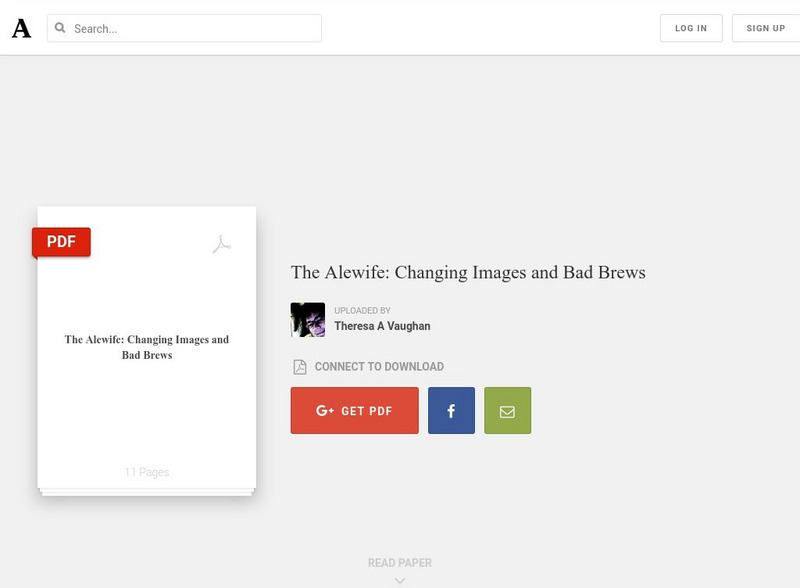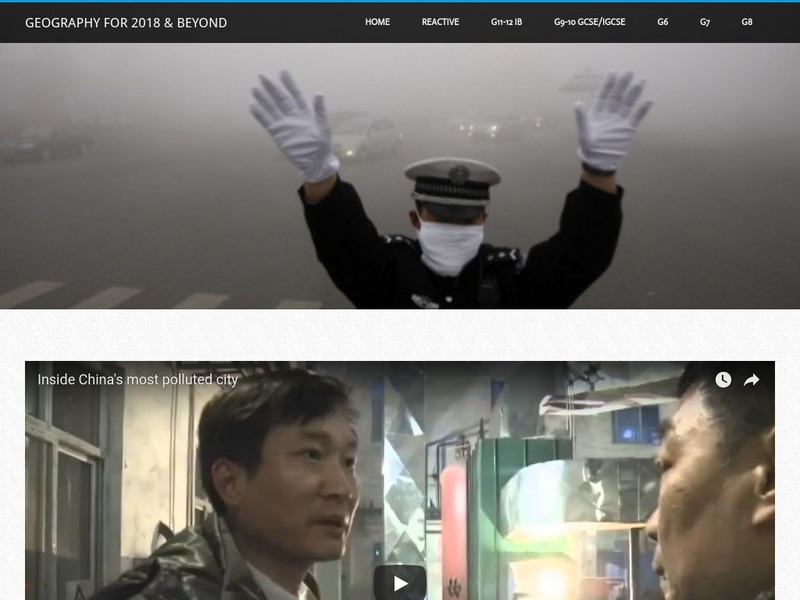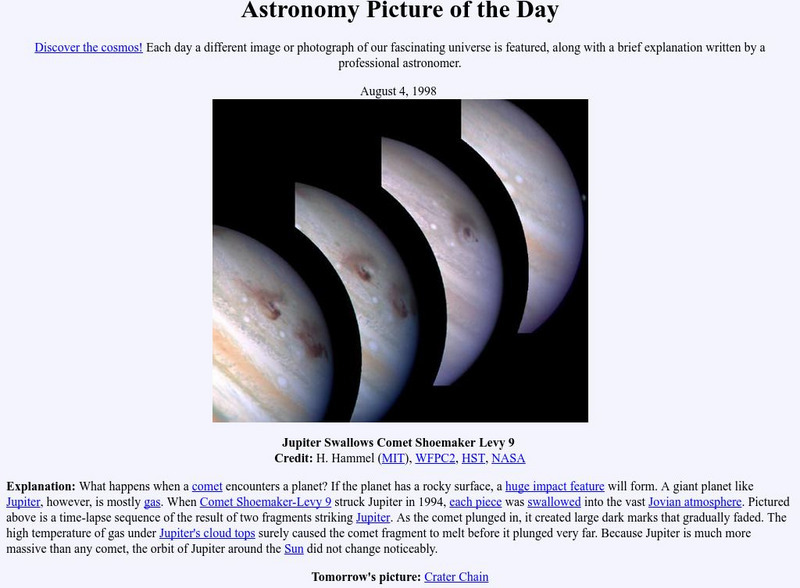Hi, what do you want to do?
Curated OER
Planets
In this planets worksheet, students read about Mercury, Venus, and Earth and then complete 21 multiple choice, 2 true or false, and 1 short answer question.
Curated OER
Lasting Impressions
Students brainstorm a list of images, people, and emotions that they associate with news stories that are particularly moving. They explore how the play "The Laramie Project" presents the events surrounding Matthew Shepard's death....
Curated OER
All Caught Up!
Students discover the difficulty involved in trying to isolate a target species by fisherman. They discuss this issue and its problems as a class. They examine how bycatching affects their lives.
Curated OER
About Abraham Lincoln
Fifth graders complete a variety of activities and exercises as they study the life, policies, and lasting influence of Abraham Lincoln.
Curated OER
Poetic Devices in Songs
By teaching about poetic devices in music teachers can provide a creative way to practice reading, writing, and language skills.
Curated OER
Historical Interview Project
Students practice effectively interviewing a subject and then use that interview to create a movie.
Curated OER
Exploring Optical Movement in Art
Students describe, represent and analyze patterns and relationships using shapes. They create simple geometric patterns. They demonstrate increasing technical ability and skill to complete visual arts assignments.
Curated OER
Awesome Audio Book
Young scholars choose a written piece and present it aloud in a student-made recording. They analyze how sounds are used to elicit emotion.
Curated OER
Benjamin Franklin: Colonial Printer and Journalist
Fifth graders explore how important print media is to everyone's daily life. Students use present daily newspapers and they are to reproduce weather forecasts.
Curated OER
What is Beauty?
Young scholars discuss "What is Beauty?" and discover their own definitions.
Curated OER
Digital Photography for Movie Making
Fifth graders explore digital photography. In this technology skills lesson, 5th graders take digital photographs and use them to create movies with movie maker software.
Curated OER
Study Guide for the Tragedy of Julius Caesar by William Shakespeare [Pdf]
A well-written study guide for The Tragedy of Julius Caesar. Includes a profile of William Shakespeare and background information about the play and its historical context. There are synopses of each act, discussions of literary devices,...
Science Education Resource Center at Carleton College
Serc: Mn Step: Animal Game Impact of Human Activity or Natural Disasters
A description of a lesson where students first listen to a story where they begin to think about and discuss the impact humans and natural disasters have on the environment. They then play a board game. This requires preparation...
Rock and Roll Hall of Fame
Rock & Roll Hall of Fame: Sti Lesson 18: Artistic Persona vs. the Individual
The topic of an author's or artist's public image or persona may become more understandable for students with the judicious selection of contemporary musicians who have taken on obvious and sometimes changing personae in their careers....
Other
Academia.edu: Avista Forum Journal: The Alewife: Changing Images and Bad Brews
Article from an issue of a journal that focused on the topic of medieval brewing. After a discussion of the status of women in medieval times from a feminist perspective, the author examines the role of alewives in the production of...
Virtual Museum of Canada
Virtual Museum of Canada: Community Stories: Saskatoon & Wwii Experience
The impact that the Second World War had on the prairie town on Saskatoon is investigated here. This investigation includes how Saskatoon was transformed from an agriculture centre to a town crucial to the mobilization of supplies and a...
PBS
Pbs Learning Media: The Great American Read: Collection
The Great American Read is an eight-part series that explores and celebrates the power of reading, told through the lens of America's 100 best-loved novels (a national survey). This LearningMedia collection highlights books from The...
ArtsNow
Arts Now Learning: Cultural Characters: The Great Depression [Pdf]
For this lesson, students look at photographs (portraits and people, historical events and images depicting strife or struggle, etc.) based around a given time period and contemplate the impact a photograph has on the perception of a...
Exploratorium
Exploratorium: Microscope Imaging Station: Mouse Embryonic Stem Cells
Stem cells have an enormous impact on the structure of a living creature. This site features still images as well as short videos of these cells in action.
Museum of the Moving Image
Museum of the Moving Image: Type of Commercial Backfire
Sometimes commercials backfire. The words, or image, of a candidate can be used against him or her to show that the candidate cannot be believed, has broken a promise, or has "flip-flopped" on an important issue. Here, you can view some...
NASA
Nasa Space Place: What Is an Impact Crater?
Brief description of impact craters with images of some of the more famous ones.
Geographypods
Geographypods: Theme 3: Economic Development: Environmental Risks and Benefits
This learning module looks at the impact of economic development on the environment. It begins with a look at a serious pollution problem in China, then looks at waste reduction and climate change. Includes an animation, images, and videos.
Curated OER
Eternal Egypt: Door From the Tomb of Sennedjem
Painted on the door from his tomb is Sennedjem. He is portrayed seated beside his wife, and playing senet, a popular game among the living that could also have an impact in the afterlife as well.
NASA
Nasa: Astronomy Picture of the Day:collision at Jupiter
What happens when a snowball hits a huge ball of gas? When Comet Shoemaker Levy 9 hit Jupiter, it was swallowed up in the atmosphere, leaving huge temporary impact scars. Here is an image that shows the large dark marks and how they...
















![Study Guide for the Tragedy of Julius Caesar by William Shakespeare [Pdf] Activity Study Guide for the Tragedy of Julius Caesar by William Shakespeare [Pdf] Activity](https://static.lp.lexp.cloud/images/attachment_defaults/resource/large/FPO-knovation.png)





